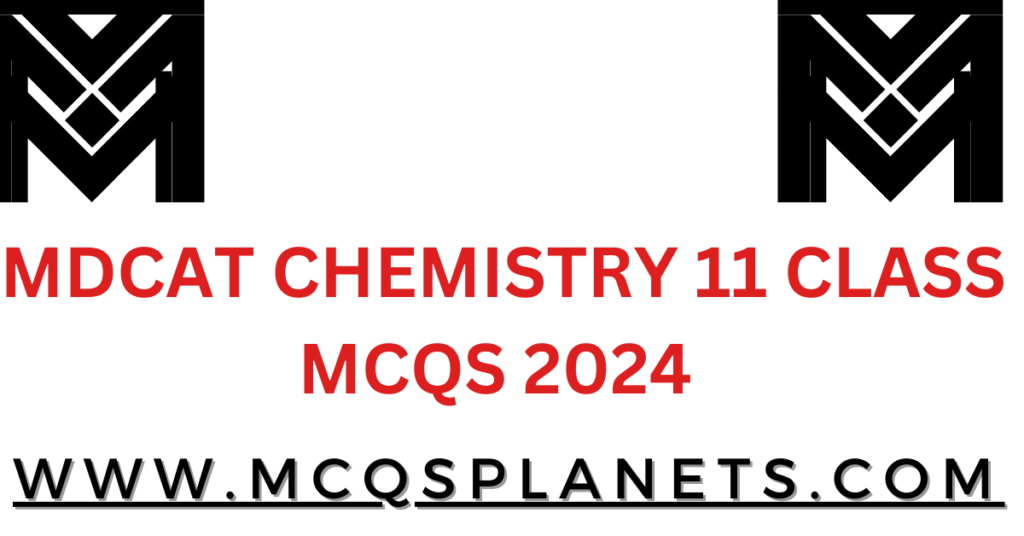MDCAT CHEMISTRY 11 CLASS MCQS 2024

Atomic Structure
- The atomic number of an element is equal to:
a) Number of neutrons
b) Number of protons
c) Number of electrons
d) Sum of protons and neutrons
Answer: b - Isotopes differ in their:
a) Atomic number
b) Number of neutrons
c) Chemical properties
d) Valency
Answer: b - Which scientist discovered the nucleus?
a) Thomson
b) Rutherford
c) Bohr
d) Dalton
Answer: b
Chemical Bonding
- Ionic bonds are formed between:
a) Two metals
b) A metal and a non-metal
c) Two non-metals
d) Noble gases
Answer: b - The octet rule is not followed in:
a) NH₃
b) H₂O
c) BF₃
d) CH₄
Answer: c - The shape of a methane (CH₄) molecule is:
a) Linear
b) Tetrahedral
c) Pyramidal
d) Planar
Answer: b
States of Matter
- The interconversion of states of matter can be explained by:
a) Dalton’s atomic theory
b) Kinetic molecular theory
c) Bohr’s model
d) Avogadro’s hypothesis
Answer: b - Which of the following has the highest kinetic energy?
a) Solids
b) Liquids
c) Gases
d) Plasma
Answer: d
Periodic Table and Periodicity
- The periodic table is based on:
a) Atomic mass
b) Atomic number
c) Mass number
d) Neutron-proton ratio
Answer: b - Which group in the periodic table contains noble gases?
a) Group 1
b) Group 2
c) Group 17
d) Group 18
Answer: d
Thermochemistry
- Enthalpy is a measure of:
a) Disorder of a system
b) Energy of a system
c) Heat content of a system
d) Volume of a system
Answer: c - The heat released or absorbed during a chemical reaction at constant pressure is called:
a) Work
b) Enthalpy change
c) Internal energy
d) Entropy
Answer: b
Mole Concept
- One mole of a substance contains:
a) 6.022 × 10²² particles
b) 6.022 × 10²³ particles
c) 6.022 × 10²⁴ particles
d) 6.022 × 10²⁵ particles
Answer: b - The molecular mass of water (H₂O) is:
a) 16 amu
b) 18 amu
c) 20 amu
d) 22 amu
Answer: b
Electrochemistry
- Which of the following is a good conductor of electricity?
a) Distilled water
b) Saltwater
c) Alcohol
d) Sugar solution
Answer: b - In electrolysis, the substance deposited at the cathode is:
a) Anion
b) Cation
c) Electron
d) Proton
Answer: b